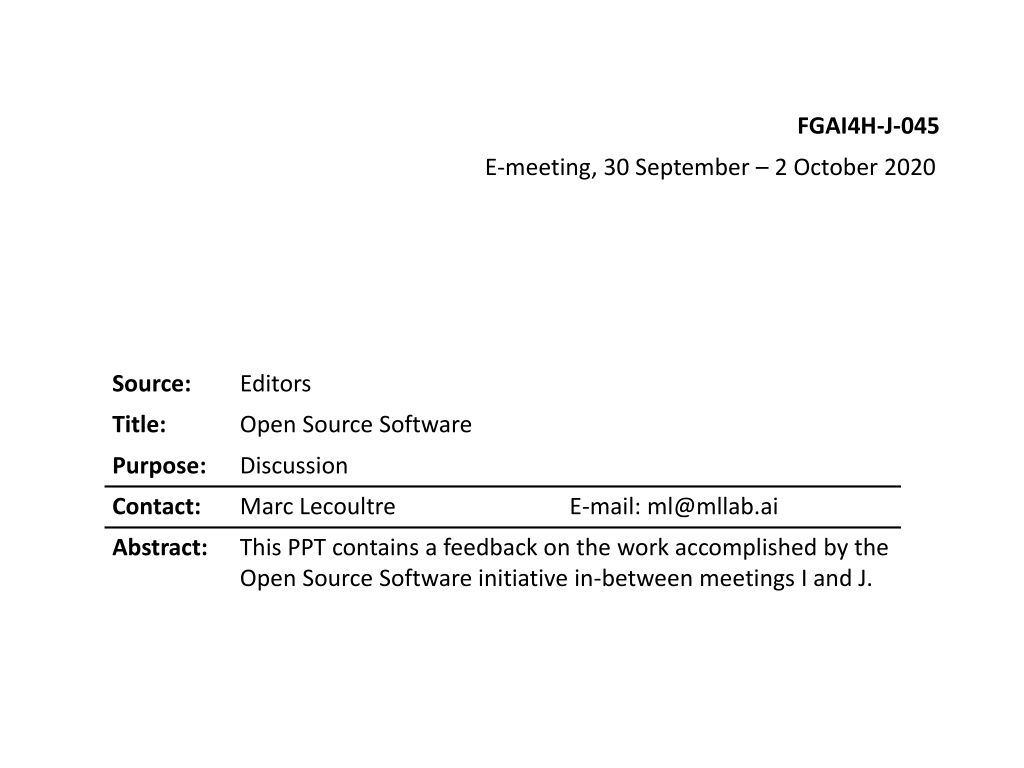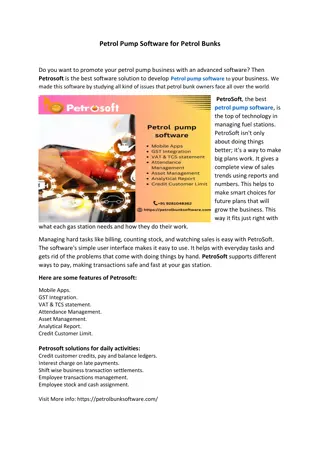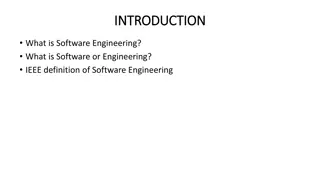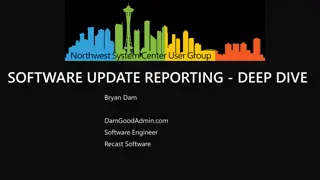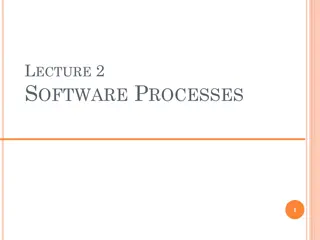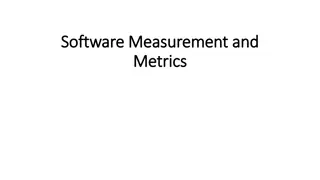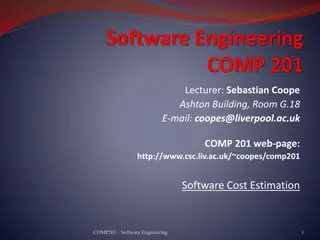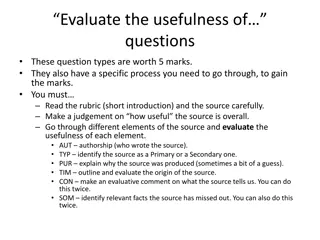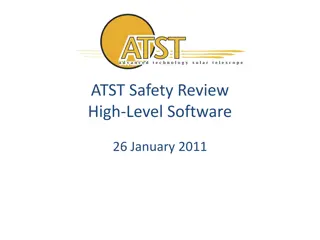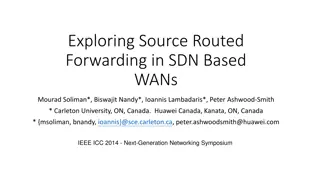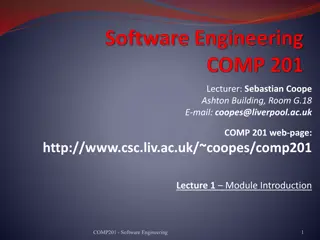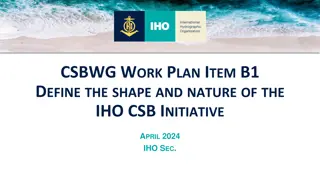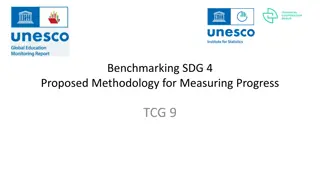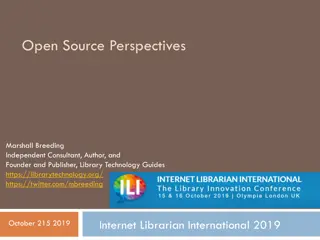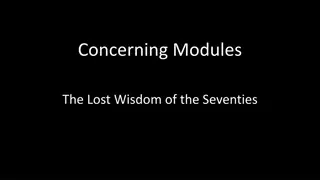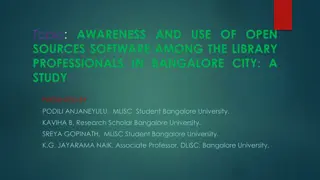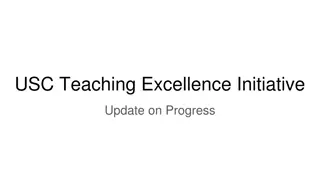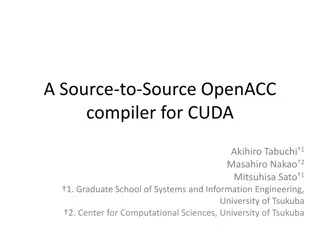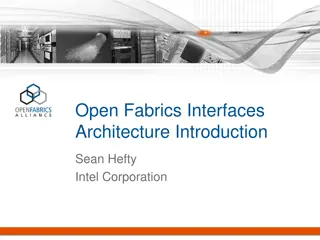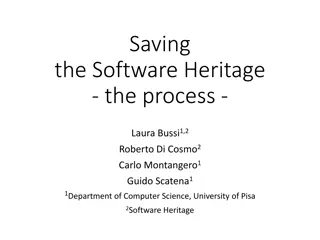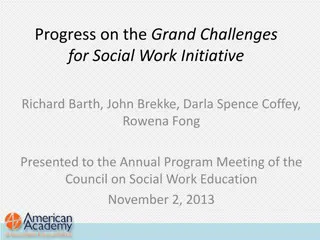Open Source Software Initiative Progress Update
The Open Source Software initiative progress update provides insights into the work accomplished during e-meetings, focusing on the development of a modular annotation tool shared by a focus group. The group's activities, such as drafting requirements, analyzing survey results, and setting up collaboration environments, are detailed. The initiative also encompasses various software packages for data acquisition, storage, annotation, prediction, evaluation, and reporting. Key tasks include drafting requirement documents, building a functionality matrix, creating epics and features, writing user stories, evaluating workloads, and prioritizing feature development.
Download Presentation

Please find below an Image/Link to download the presentation.
The content on the website is provided AS IS for your information and personal use only. It may not be sold, licensed, or shared on other websites without obtaining consent from the author.If you encounter any issues during the download, it is possible that the publisher has removed the file from their server.
You are allowed to download the files provided on this website for personal or commercial use, subject to the condition that they are used lawfully. All files are the property of their respective owners.
The content on the website is provided AS IS for your information and personal use only. It may not be sold, licensed, or shared on other websites without obtaining consent from the author.
E N D
Presentation Transcript
FGAI4H-J-045 E-meeting, 30 September 2 October 2020 Source: Editors Title: Open Source Software Purpose: Discussion Contact: Marc Lecoultre E-mail: ml@mllab.ai Abstract: This PPT contains a feedback on the work accomplished by the Open Source Software initiative in-between meetings I and J.
How did it start ? The focus group started during meeting G to discuss the potential of a modular annotation tool that could be shared by the whole focus group During meeting H the first thoughts on the possibility of a joint tool where outlined in document FG-AI4H-H-038-R01 This workstream was established to draft the requirements and specifications for this annotation tool This group had 11 members
Previous work We met 3 times in-between meeting H and I Discussed about high level requirements: End to End Global Scope Meta-data and Bias Quality Had 2 annotation tool presentations (hulilab, TG- Symptoms) Reviewed questionnaire by Shan and Sebastian
Since meeting I Shan and Sebastian: contacted TG for collecting (high-level) annotation requirements https://docs.google.com/forms/d/1wW3xt5u5BVPrrqhCi mBzcB5ltfTjBnGsn71ZWOiTNt8/edit#responses Analyzed the results from Shans survey and the tools the TG mentioned Started some more formal analysis for the functional and no functional requirements Started outlining on software design based on the requirements Set up a collaboration env. and a team
Open Source Software The Open Source includes: Data Acquisition Package (DAP) Data Storage Package (DP) Annotation Package (AP) Prediction Package (PP) Evaluation Package (EP) Reporting Package (RP)
What we do 1. We draft a requirement document https://docs.google.com/document/d/1eksm8dm7MYuNjtThRp-zmwlxvFXUrjSjDnkpuMwZNJ4/edit#heading=h.z6ne0og04bp5 2. Build a functionality matrix https://docs.google.com/spreadsheets/d/1t3uwPQIKFKJejtjINWOkHR-h7nlZsuYy4pqhIdCSiEo/edit?usp=sharing 3. Create Epics and Features in Azure DevOps https://dev.azure.com/mllabai/FG-AI4H%20Assessment%20Platform 4. Write User Stories 5. Evaluate the workload to deliver functionalities 1, 2, 3, 5, 8, 13, 20, 40 and 100 6. Prioritize Features development
How we work We have a bi-weekly call with module drivers Module drivers organize the work and meetings in their group We use Slack to communicate Slack messages are mirrored to Teams We use Azure DevOps to formalize the requirements and effort estimate Azure Devops is used to store the source code
Our Team Open Source Group Driver : Marc Lecoultre Data Acquisition Package (DAP) : TBD Data Storage Package (DP): Andrea Romaoli Garcia () Annotation Package (AP) : Marc Lecoultre Prediction Package (PP) : TBD Evaluation Package (EP) : Candidates: Luis Oala, Elora, Jana Fehr, Ananya Gangavarapu Reporting Package (RP) : Pradeep Balachandran Members (20): Ananya Gangavarapu, Andrea Romaoli Garcia, Dominik a Schneider, Eva Weicken, Jhonatan Tirado, Joachim Krois, Oala Luis, Pradeep Balachandran, Raymond Francis Sarmiento, Saul Calderon Ramirez, Shan Xu, Steffen Vogler, William Wasswa, Harpreet Singh, Henry Hoffmann, Janis Reinelt, Ricardo Brenes, Sebastian Bosse, Clemens Schoell, Marc Lecoultre
Next Steps Start building functionality matrix for all modules Define features and estimates Define the MVP Start development Get fundings
